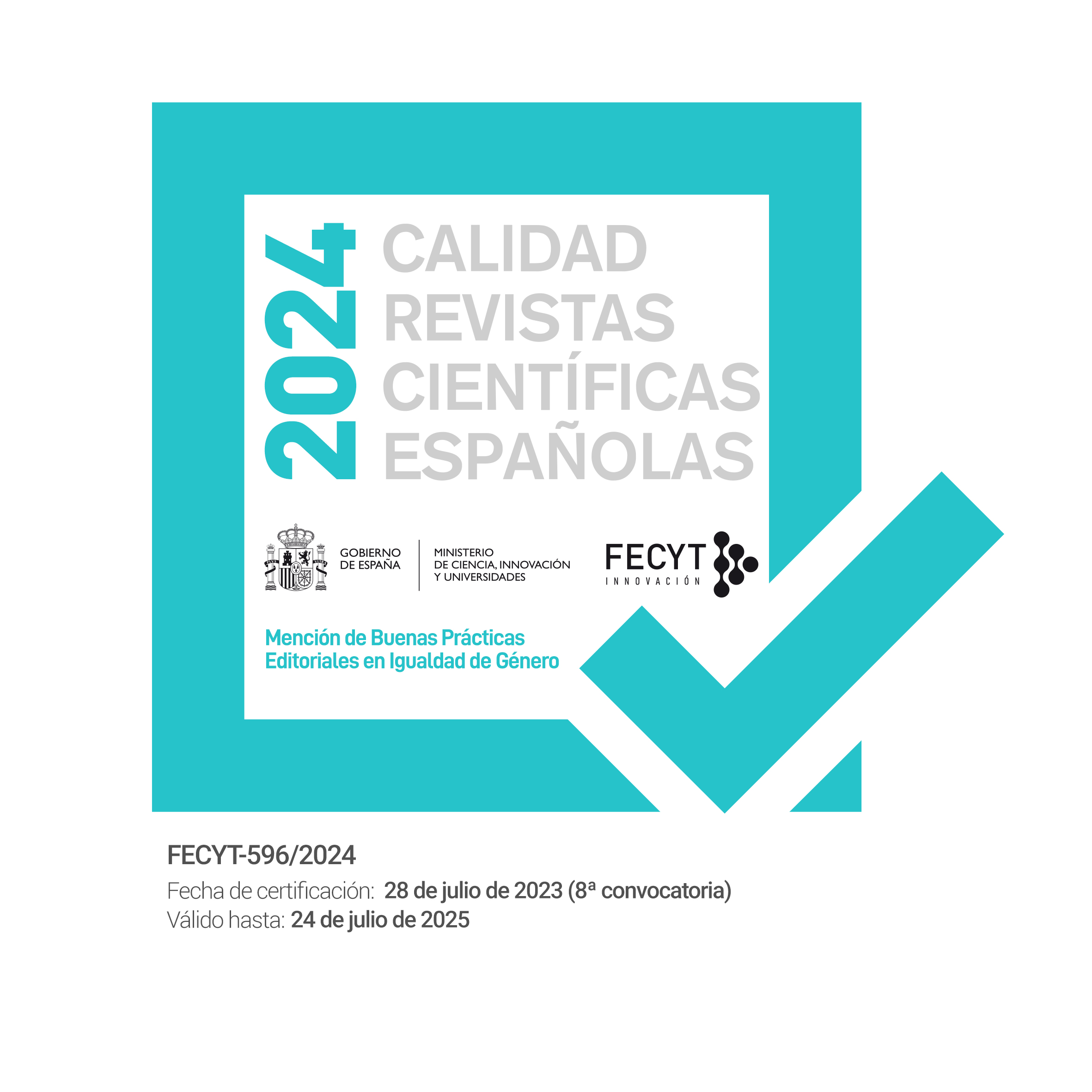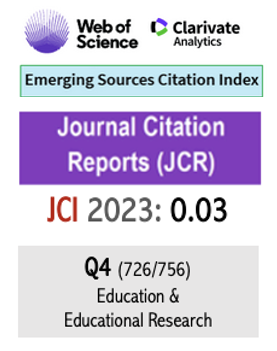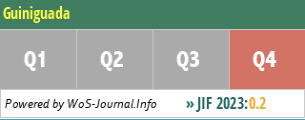Creative cognitive processes and error detection in worked-out problem examples in secondary education
10.20420/ElGuiniguada.2024.725
Keywords:
creativity, cognitive process, error, problem solving, secondary educationAbstract
The goals of the present study are to analyze the influence of the use of certain creative cognitive processes on error detection in worked-out problem examples and to examine the effects of grade level and gender on these processes and error detection. A total of 140 students (75 females and 65 males) from three different grades of secondary education participate. An error detection test and a questionnaire on creative cognitive processes are administered to the participants. Through correlation, multiple regression and mediation analyses it is possible to conclude that: a) the variable that most contributes to the variability in error detection is grade level; b) grade level generates significant differences in the use of the processes perspective-taking, idea flow, metaphorical and analogical thinking, and brainstorming; and c) these last four processes have a significant indirect effect on error detection.
Downloads
References
Aldous, C. R. (2005). Creativity in Problem Solving: Uncovering the origin of new ideas. International Education Journal, 5(5), 43-56. https://openjournals.library.sydney.edu.au/IEJ/issue/view/562
Basadur, M., & Gelade, G. A. (2005). Modelling applied creativity as a cognitive process: Theoretical foundations. Korean Journal of Thinking and Problem Solving, 15(2), 13-41. https://www.basadur.com/wp-content/uploads/2021/06/2005-Modeling-applied-creativity-as-a-cognitive-process.pdf
Bermejo, R., Ferrando, M. M., Sainz, M., Soto, G., & Ruiz, M. J. (2014). Procesos cognitivos de la creatividad en estudiantes universitarios. Educatio Siglo XXI, 32(2), 41-58. https://doi.org/10.6018/j/202151
Botella, M., & Lubart, T. (2019). From dynamic processes to a dynamic creative process. En R. A. Beghetto, G. E. Corazza (Eds.), Dynamic Perspectives on Creativity (pp 261-278). Springer https://doi.org/10.1007/978-3-319-99163-4_15
Chen, X., Mitrovic, A., & Mathews, M. (2019). Learning from worked examples, erroneous examples, and problem solving: Toward adaptive selection of learning activities. IEEE Transactions on Learning Technologies, 13(1), 135-149. https://doi.org/10.1109/TLT.2019.2896080
Dikici, A., Özdemir, G., & Clark, D. B. (2020). The relationship between demographic variables and scientific creativity: mediating and moderating roles of scientific process skills. Research in Science Education, 50, 2055-2079. https://doi.org/10.1007/s11165-018-9763-2
Gómez, C. B., Sanjosé, V., & Solaz-Portolés, J. J. (2012). Una revisión de los procesos de transferencia para el aprendizaje y enseñanza de las ciencias. Didáctica de las Ciencias Experimentales y Sociales, 26(1), 199-227. https://doi.org/10.7203/DCES.26.1934
Hayes, A. F. (2013). Introduction to mediation, moderation and conditional process analysis. A regression based approach. The Guilford Press.
Hélie, S., & Sun, R. (2010). Incubation, insight, and creative problem solving: a unified theory and a connectionist model. Psychological Review, 117(3), 994-1024. https://doi.org/10.1037/a0019532
Hijarro-Vercher, A., Solaz-Portolés, J. J., & Sanjosé, V. (2023). Creatividad, metacognición y autoeficacia en la detección de errores en problemas resueltos. Revista Fuentes, 25(3), 256-266. https://doi.org/10.12795/revistafuentes.2023.23050
Hu, W., & Adey, P. (2002). A scientific creativity test for secondary school students. International Journal of Science Education, 24(4), 389-403. https://doi.org/10.1080/09500690110098912
Hyde, J. S., Lindberg, S. M., Linn, M. C., Ellis, A. B., & Williams, C. C. (2008). Gender similarities characterize math performance. Science, 321(5888), 494-495. http://dx.doi.org/10.1126/science.1160364
Lindberg, S. M., Hyde, J. S., Petersen, J. L., & Linn, M. C. (2010). New trends in gender and mathematics performance: a meta-analysis. Psychological Bulletin, 136(6), 1123. https://doi.org/10.1037/a0021276
Loibl, K. & Leuders, T. (2019). How to make failure productive: Fostering learning from errors through elaboration prompts. Learning and Instruction, 62, 1-10. https://doi.org/10.1016/j.learninstruc.2019.03.002
Miller, A. L. (2014). A self-report measure of cognitive processes associated with creativity. Creativity Research Journal, 26(2), 203-218. https://doi.org/10.1080/10400419.2014.901088
Mumford, M. D., Medeiros, K. E., & Partlow, P. J. (2012). Creative thinking: Processes, strategies, and knowledge. The Journal of Creative Behavior, 46(1), 30-47. https://doi.org/10.1002/jocb.003
Muñoz, J. J. F., & Gónzalez, J. M. G. (2017). El análisis de mediación a través de la macro/interfaz Process para SPSS. REIRE Revista d'Innovació i Recerca en Educació, 10(2), 79-88. https://doi.org/10.1344/reire2017.10.218109
O'Neill, S., & Shallcross, D. (1994). Sensational thinking a teaching/learning model for creativity. The Journal of Creative Behavior, 28(2), 75-88. https://doi.org/10.1002/j.2162-6057.1994.tb00722.x
Renkl, A. (2017). Learning from worked-examples in mathematics: students relate procedures to principles. ZDM, 49(4), 571-584. https://doi.org/10.1007/s11858-017-0859-3
Sadler-Smith, E. (2015). Wallas’ four-stage model of the creative process: More than meets the eye? Creativity Research Journal, 27(4), 342-352. https://doi.org/10.1080/10400419.2015.1087277
Sobel, M. E. (1982). Asymptotic intervals for indirect effects in structural equations models. Sociological Methodology, 13, 290-312. https://doi.org/10.2307/270723
Wang, Y., & Chiew, V. (2010). On the cognitive process of human problem solving. Cognitive Systems Research, 11(1), 81-92. https://doi.org/10.1016/j.cogsys.2008.08.003
Woolley, J. S., Deal, A. M., Green, J., Hathenbruck, F., Kurtz, S. A., Park, T. K. H., Pollock, S. V. S., Transtrum, M. B., & Jensen, J. L. (2018). Undergraduate students demonstrate common false scientific reasoning strategies. Thinking Skills and Creativity, 27, 101–113. https://doi.org/10.1016/j.tsc.2017.12.004
Yeh, Y. C., & Wu, J. J. (2006). The cognitive processes of pupils' technological creativity. Creativity Research Journal, 18(2), 213-227. To link to this article: https://doi.org/10.1207/s15326934crj1802_7
Zamora, Á., Suárez, J. M., & Ardura, D. (2018). Error detection and self-assessment as mechanisms to promote self-regulation of learning among secondary education students. The Journal of Educational Research, 111(2), 175-185. https://doi.org/10.1080/00220671.2016.1225657
Zhao, H., & Acosta-Tello, E. (2016). The impact of erroneous examples on students’ learning of equation solving. Journal of Mathematics Education, 9(1), 57-68. https://educationforatoz.com/images/Hong_Zhao_2016.pdf
Published
How to Cite
Issue
Section
License
Copyright (c) 2024 Adrián Requejo García, Joan J. Solaz-Portolés, Vicente Sanjosé López

This work is licensed under a Creative Commons Attribution-NonCommercial-NoDerivatives 4.0 International License.
Authors who publish with this journal agree to the following terms:
- Authors retain copyright and grant the journal right of first publication with the work simultaneously licensed under a Creative Commons Attribution License that allows others to share the work with an acknowledgement of the work's authorship and initial publication in this journal. You can not make a commercial use of the work. The use derived from the work is also not allowed.
- Authors are able to enter into separate, additional contractual arrangements for the non-exclusive distribution of the journal's published version of the work (e.g., post it to an institutional repository or publish it in a book), with an acknowledgement of its initial publication in this journal.
- Authors are permitted and encouraged to post their work online (e.g., in institutional repositories or on their website) prior to and during the submission process, as it can lead to productive exchanges, as well as earlier and greater citation of published work (See The Effect of Open Access).
















